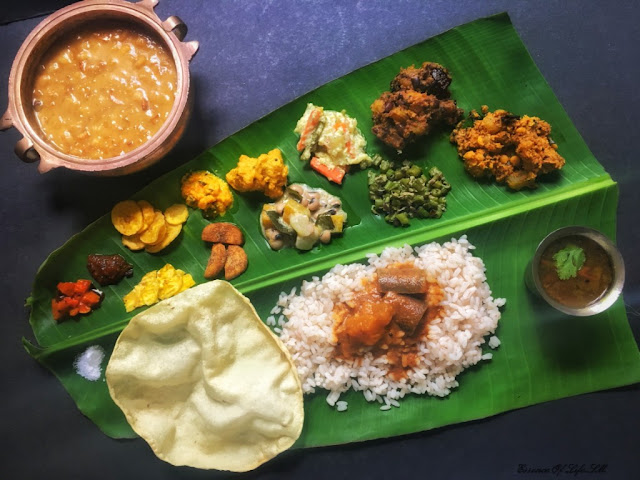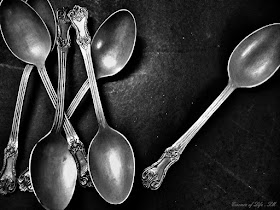"How to Cook Kerala Matta Rice - Mastering the Art of Tradition"
"Steaming Kerala Matta Rice on Banana Leaf – A Taste of Tradition"
|
"Perfect Kerala Matta Rice Recipe: Your Foolproof Guide to Cooking Palakkadan Matta Rice"
Welcome to the ultimate guide for cooking perfect Kerala Matta Rice! Known as Rose Matta Rice or Palakkadan Matta Rice, Kerala Red Rice or Red Par-boiled Rice is an indigenous variety of rice grown in Palakkad District of Kerala in South India. It is colloquially called Kuthari or Chembavu Ari. It is a rich unpolished rice. It boasts rich flavour and numerous health benefits. Join me as we explore the secrets to mastering this staple of Kerala cuisine.
Kerala Matta Rice, also known as Rose Matta Rice, is cherished for its low glycaemic score and abundance of dietary fibre. Packed with essential nutrients like magnesium, iron, and vitamins, it's no wonder this rice is a favourite among Keralites. From traditional Sadhya(Kerala Banquet) to everyday meals and festive delicacies, Kerala Matta Rice reigns supreme in the culinary world of Kerala.
 |
| "Kerala Sadhya with Steaming & Perfectly cooked Kerala Matta Rice" |
This versatile grain is not limited to being a main course delight. Its adaptability shines through in various culinary applications, such as:
- Rice Porridges: Kerala Matta Rice lends its hearty texture to comforting rice porridges, known locally as Kanji/Congee.
- You can emphasize its robust and earthy flavour, which pairs well with
spicy fish curries, yogurt curry, and various vegetarian and
non-vegetarian dishes.
- Batters for Delicacies: From the traditional Idiyappam, Appam, Puttu, to the beloved Idli, Dosa, and an array of snacks like Murukku, and Kondattams, Kerala Matta Rice forms the foundation of delectable batters.
- Naadan Palaharams: Embrace the essence of local delicacies with dishes like Achappam, Kuzhalappam, Unniyappam, Elayada, Kozhukatta, Pesaha Appam, and Neyappam, all enriched by the distinctive flavour of Kerala Matta Rice.
- Desserts: Indulge your sweet tooth with decadent desserts like Payasams especially Paal Payasam, Ney Payasam, Aravana Payasam prepared using Unakkalari or Matta Rice standing as a quintessential favourite among Kerala's dessert offerings.
Explore a wonder collection of recipes from God's Own Country - Kerala, here...
Cooking rice can be a breeze with the right technique. Unlock the secrets to perfectly cooked Kerala Matta Rice with this comprehensive guide. Explore traditional techniques passed down through generations, the stovetop method or the convenience of a pressure cooker, alongside modern innovations like the Instant Pot method and thermal pot cooking, ensuring flawless results every time. I've got you covered with foolproof instructions for perfectly cooked Kerala Matta Rice every time.
*This post has been updated to include the latest tips and new cooking techniques for mastering Kerala Rose Matta Rice. Follow the detailed guide to master the art of cooking Kerala Matta Rice
to perfection—every grain beautifully separated and deliciously fluffy.
"Perfectly Cooking Kerala Rose Matta Rice: Expert Tips for Traditional and Modern Cooking Methods"
Unlocking the Perfectly Cooked Kerala Rose Matta Rice: The Handy Secret
"Foolproof tried & tested methods"
The key to achieving perfectly cooked Kerala Rose Matta Rice lies in mastering the water-to-rice ratio. While conventional wisdom suggests using 3½ - 5 cups of water for every 1 cup of rice, my years of experience have led me to a self-revelation: the magic lies in using 8 cups of water for 1 cup of rice.
You might find this water quantity surprising, but trust me, it's the secret tip to achieving impeccable results. With this amount of water, though seemingly excessive, there's no need to fret. Why? Because in all the cooking methods detailed below, we're going to drain out the excess water, ensuring that the rice is perfectly cooked and fluffy.
Ingredients:
- Kerala Rose Matta Rice - 1 Cup
- Water - 8 Cups
Preparation:
- Rinse 1 cup of Kerala Matta Rice thoroughly to remove excess starch and impurities.
- Wash
the rice at least for 4 -5 times, or until the water runs clear.
- Optionally, soak the rice for 30–45 minutes to enhance texture and reduce cooking time.
- Drain the water.
Stovetop Method: (Rice Water Ratio 1: 8 Cups)
- Boil water in a large saucepan big enough to hold the rice and water.
- Allow the water to boil.
- When the water starts to boil, slowly add the rice to it
- Keeping the saucepan uncovered and bring the rice to a boil.
- Once the water begins to boil, lower the flame.
- Cover the pot and cook the rice on a low flame for about 35–45 minutes.
- Adjust the Water as required.
- Once the rice is cooked, remove from fire and keep it aside for at least 10 minutes to cool down.
- Drain the excess water traditionally or by pouring it into a colander.
- Fluff up the Kerala Matta Rice before serving.

"Everyday Delights: Perfetcly cooked Kerala Matta Rice with Spicy Fish Curry & Tapioca"

Pressure Cooker Method: (Rice Water Ratio 1: 8 Cups)
Now, you might wonder about using 8 cups of water in a pressure cooker. Won't it splash out through the lid while it whistles? The problem of starch spilling out all over my Stove, cooker lids and on Counter tops is also resolved in this method.
Here's the trick: opt for a slightly larger pressure cooker. This ensures that even with the higher water quantity, there's no messy splashing to contend with.
- Boil water in a pressure cooker.
- When the water starts to boil, slowly add the rice to it.
- Keeping the pressure cooker uncovered, bring the rice to boil.
- Once the water boils, cover the Pressure Cooker with the lid and the Vent Weight.
- Begin cooking under pressure over high heat for 3 whistles, then lower the flame and cook for another 3 whistles.
- Switch off the flame and wait for the pressure to release.
- Drain the excess water traditionally or by pouring it into a colander.
- Fluff up the Kerala Matta Rice before serving.
Stove Top + Thermal Cooker Method - A Kerala Household favourite:
(Rice Water Ratio 1: 8 Cups)
 |
| "Choodarapetty: Traditional Thermal Cooker for Slow Cooking" |
- Boil water in a large saucepan big enough to hold the rice and water.
- Allow the water to boil.
- When the water starts to boil, slowly add the rice to it
- Keeping the saucepan uncovered and bring the rice to a boil.
- Once the water begins to boil, lower the flame.
- Cover the pot and cook the rice on a low flame for about 25–30 minutes, until 3/4 done.
- Place the vessel inside the cooker on the "Bakelite mat" without touching the sides of the cooker and close the thermal cooker/choodarapetty with its lid immediately.
- The rice should be ready by 45 to 60 minutes, as it cooks in the retained heat of the thermal cooker.
- Once done, Drain the excess water traditionally or by pouring it into a colander.
- Fluff up the Kerala Matta Rice before serving.
 |
| "Traditional 'Pothi Choru': A Complete Meal Packed in Banana Leaf" |
Instant Pot Method (Rice Water Ratio 1: 8 Cups)
- Rinse and soak the rice as instructed earlier.
- In the Instant Pot, add the rinsed rice and 8 cups of water.
- Set to the "Rice" or "Manual" setting and cook for around 8 minutes at high pressure.
- Allow pressure to release naturally.
- Once done, Drain the excess water traditionally or by pouring it into a colander.
- Fluff up the Kerala Matta Rice before serving.
 |
| "Steaming Kerala Matta Rice on Banana Leaf – A Taste of Tradition" |
Essential Tips for Cooking Kerala Rose Matta Rice
Choosing the Right Pot:
- When cooking in a pressure cooker, select one that's larger than what you might typically use. This helps prevent any starchy water from spilling out during the cooking process.
- For stove-top methods, use a heavy-bottomed pot to distribute heat evenly and prevent sticking.
- Always rinse the rice thoroughly under cold water until the water runs clear. This removes loose starch and impurities, improving the texture and taste of the cooked rice.
Soaking the Rice:
- Soak the rice for at least 30 minutes before cooking. Soaking helps shorten cooking time and enhances the texture of the rice.
Water-to-Rice Ratio: (Rice Water Ratio 1: 8 Cups)
- While traditional methods suggest using 3½ to 5 cups of water per cup of rice, I recommend using 8 cups. This larger quantity allows the rice to cook fully and become fluffy, with the excess water drained off after cooking.
Cooking Times and Techniques:
- Pressure Cooker: Ensure not to overfill the cooker, and adjust the cooking time based on the size and age of the rice.
- Stove-Top: Simmer the rice gently and check periodically to avoid overcooking.
- Instant Pot and Thermal Pot: These modern methods offer convenience and consistent results, making them excellent choices for busy cooks.
Draining the Starch:
- Draining the cooked rice helps remove excess starch, which is particularly high in Kerala Rose Matta Rice. This step is crucial for achieving perfectly cooked and fluffy rice.
Post-Cooking:
- After draining the rice, let it sit covered for 5–10 minutes. This allows the grains to set and absorb any residual steam, enhancing the overall texture.
Storing Cooked Kerala Rose Matta Rice
Let's discuss a bit about proper Storage and Reheating Tips for cooked Kerala Rose Matta Rice, which can maximize its freshness.
 |
| "Traditional Kerala Matta Rice - Ready for Cooking" |
In this updated post, I’ve shared various methods to ensure Kerala Matta Rice is cooked to perfection every time, accompanied by simple and straightforward tips. From traditional stove-top techniques to modern approaches using the Instant Pot and the Kerala household favourite—the Choodarapetty or Thermal Cooker—these methods cater to all cooking preferences. Choose the one that best suits you, and trust me, you’ll enjoy perfect results without any mishaps when cooking Kerala Matta Rice!
Kerala Matta Rice is not only a staple in Kerala cuisine, enjoyed daily and during grand Sadhyas, but it's also a healthy choice. Rich in fibre and low on the glycemic index, this rice supports a balanced diet while providing the satisfaction of a delicious, culturally rich meal. Embrace these methods for perfectly cooked rice that's fluffy, nutritious, and always delightful.
Enjoy cooking Kerala Matta Rice and explore more on "How to Perfectly Cook Various Types of Rice"—from Raw Rice and Basmati Rice to Par-boiled Rice, Fragrant/Jasmine Rice, Sticky/Glutinous Rice, and Brown Rice—by visiting my blog, 'Essence
of Life - Food'. Dive into a world of rice recipes that cater to every
palate and occasion!











0 comments